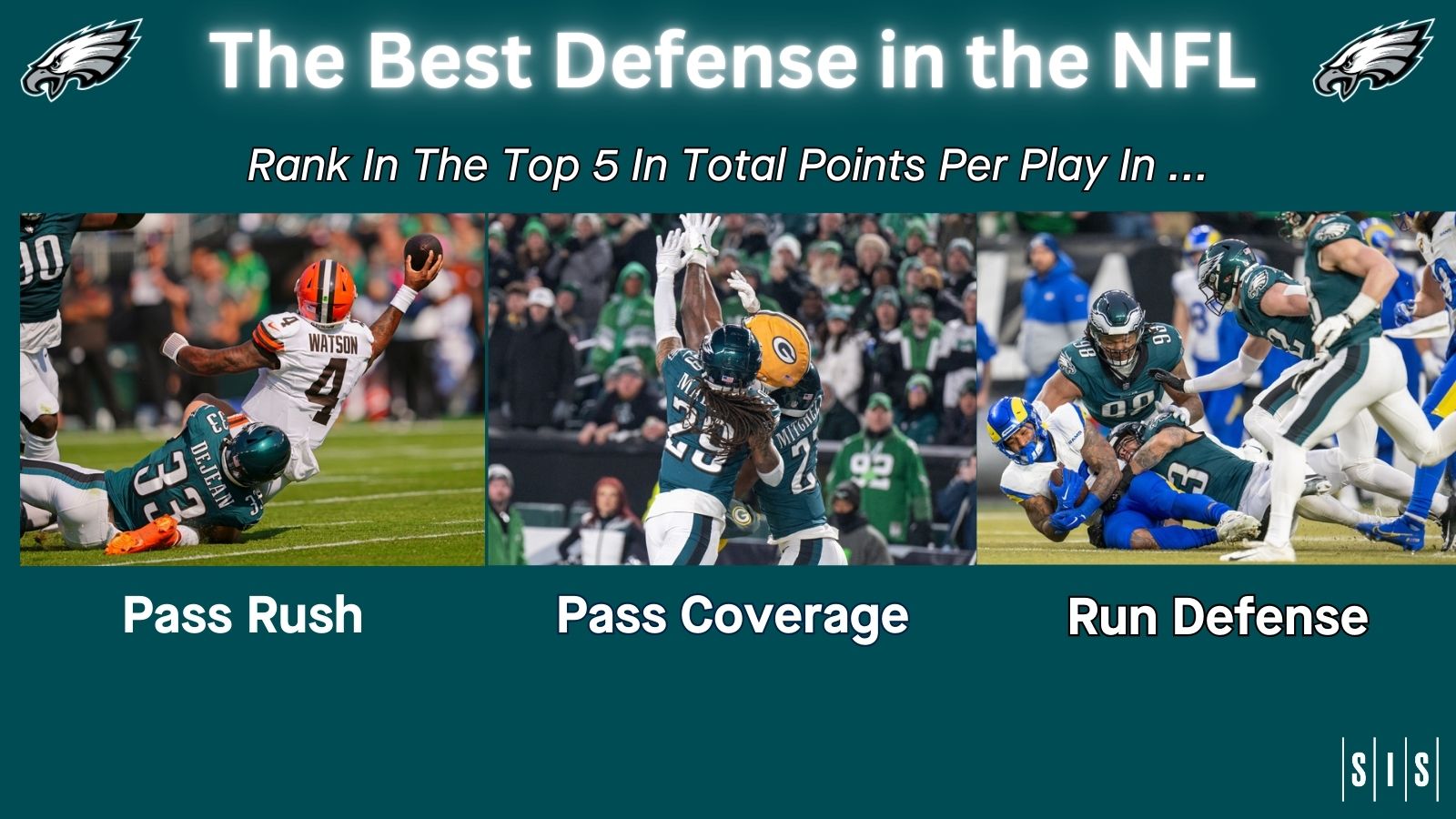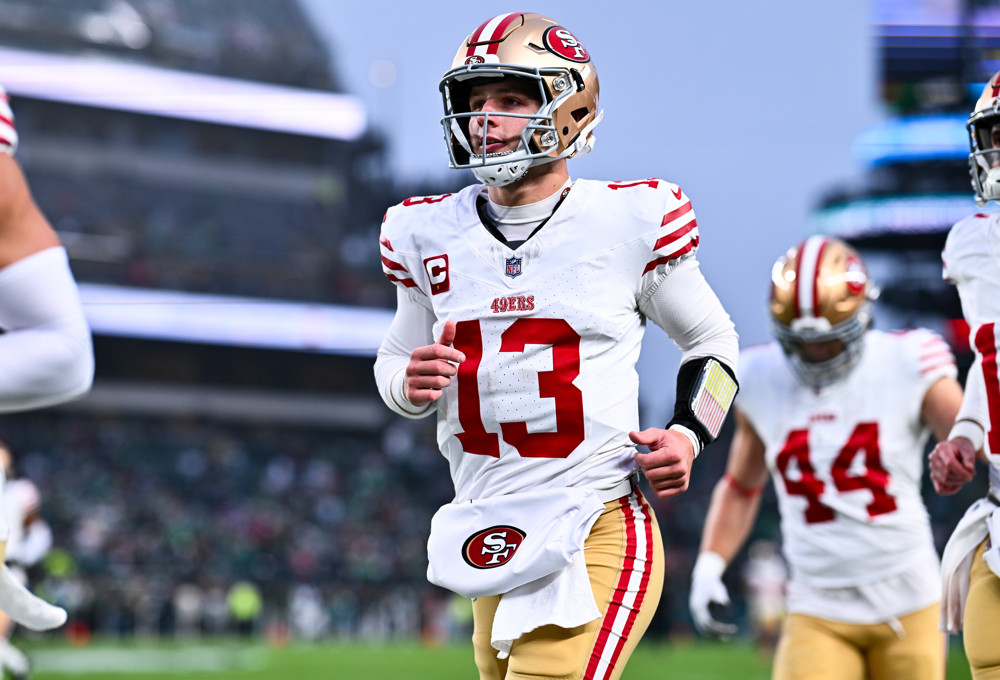Over the spring/summer, the SIS R&D staff is convening on the Off the Charts Podcast to talk about their top ten players at a position. To do this, we pit two methodologies against each other:
- The “Scouts,” which comes down to the film-based opinions of Matt Manocherian and Bryce Rossler, each of whom has a lot of experience breaking down film and scouting players (Matt having been a scout for NFL teams).
- The “Stats,” which involves James Weaver and Alex Vigderman devising a ranking based on a suite of metrics, and having that ranking speak for itself.
Officially, Sports Info Solutions does not condone the dichotomy between scouting and statistical analysis. Each of them provides data in their own way and should inform our evaluation of a player.
When we originally produced the Football Rookie Handbook before transitioning that content to our NFL Draft site, we put the scouting reports and stats side-by-side with the idea that the reader would bounce back and forth between them and leverage both to come to a conclusion about a prospect.
So, without further ado, let’s head into the trenches and break down the ‘Best Interior Offensive Linemen in the NFL’ Top 10 lists.
| Scouts’ Opinion | Statistical Analysis |
| 1. Zack Martin | 1. Jason Kelce |
| 2. Jason Kelce | 2. Kevin Zeitler |
| 3. Creed Humphrey | 3. Joel Bitonio |
| 4. Quenton Nelson | 4. Isaac Seumalo |
| 5. Joel Bitonio | 5. Zack Martin |
| 6. Erik McCoy | 6. Tyler Linderbaum |
| 7. Joe Thuney | 7. Joe Thuney |
| 8. Brandon Scherff | 8. Jon Runyan Jr. |
| 9. Corey Linsley | 9. Ben Powers |
| 10. Frank Ragnow | 10. Creed Humphrey |
The Stats List Methodology
The stats-based ranking includes a three-year recency-weighted average of a player’s results across several different metrics, with the following weights applied to each:
-
- 25% Pass Blocking Total Points
- 20% Run Blocking Total Points
- 10% Pass Blown Block Rate
- 10% Run Blown Block Rate
- 10% Holding penalty avoidance
- 5% Positional versatility
Total Points does as good a job of evaluating offensive line play as anything in our arsenal, so we leveraged that most, leaning a bit more into pass blocking than run blocking. These are both season totals, so to give more credit to play-to-play effectiveness we added in blown block rates as well.
Total Points doesn’t account for penalties (yet), so we wanted to ascribe some value to avoiding holding penalties. Typically linemen aren’t being called for these more than a few times a year, but they’re absolute drive killers.
And lastly, we wanted to give players credit for playing multiple positions. Most of the top players aren’t moving around because they’re so good at their primary position, but being able to provide support at multiple alignments is absolutely a valuable aspect of a player.
What the Stats Showed
The top three players on the stats list have two things in common: they are strong in both the pass game and run game, but they’re better as run blockers. That’s a bit surprising because the passing game was weighted more strongly in the metric the stats group used.
Each of Eagles C Jason Kelce, Ravens G Kevin Zeitler, and Browns G Joel Bitonio ranked in the top 15 in both Pass Blocking and Run Blocking Total Points (out of over 200 candidates), but all of their Run Blocking Total Points ranks were the higher of the two. Kelce separated himself by ranking in the top 20 in blown block rate both passing and running, which no one else could claim.
One feature that contributed to Kelce’s Total Points ranking (and is somewhat relevant for other players on the list) is that it’s difficult to disentangle responsibility for quarterback designed runs, particularly sneaks. With how much the Eagles leaned into the sneak in 2022, there are a lot of high-value plays for which Kelce is getting some Total Points credit.
Almost every player outside the top few was a good bit more productive at one type of blocking than the other. Cowboys G Zack Martin (No. 5) and Chiefs G Joe Thuney (No. 7) were the notable exceptions, ranking in the top 25 in each, but down years by their standards in 2022 dropped them down the list.
First-year Ravens center Tyler Linderbaum cracked the list at No. 6, thanks to excellent production in the run game. He ranked second in the Run Blocking Total Points category, and 12th in run blown block rate. It’s worth noting that he does have the quarterback-run caveat that affects Kelce (and former teammate Isaac Seumalo, now of the Steelers), but he was a top pick who was expected to deliver “out of the box”, so to speak, so this isn’t surprising.
What the Scouts Thought
The scouts’ list was chalky at the very top, featuring two perennial All-Pros in Martin and Kelce. A slightly less chalky No. 3 ranking went to Chiefs C Creed Humphrey.
The Chiefs are the only team to have two players on the list for both groups, with Humphrey showing up higher on the scouts’ list but below Joe Thuney on the stats list. Humphrey came in and helped transform the Kansas City line in 2021, and has done so with a difficult role, being asked to reach block and sometimes take on interior pass rushers 1-on-1.
Arguably the biggest discrepancy between the lists came with Colts G Quenton Nelson coming in at No. 4.
Per Matt, “when [Nelson’s] at his best, he’s just an absolute mauler, somebody who can move defensive tackles off the ball in the duo game when you have double teams on the inside.” Nelson helped make the Indy offensive line what it was the last few years, but a down year in 2022 did give some pause as to where he’d rank.
No. 6 ranked Erik McCoy (Saints C) plays with control and power, with exceptional processing ability in the passing game. Bryce would easily rank him a top-three center, while Matt has concerns about his skill in the run game and his ability to stay on the field consistently. The stats back that up to some extent, as he ranked in the Top 10 in avoiding blown blocks in the passing game and in the 60s in the run game.
Matt and Bryce each advocated for Chargers C Corey Linsley and Lions C Frank Ragnow to make the list at Nos. 9 and 10, respectively. They actually ranked first and second in three-year pass blown block rate, but other factors took them out of the Top 10 on the stats-based list.
Matt contends that the Chargers did well to build “inside-out” by bringing in Linsley to play center a couple years ago, taking pressure off their guards. Bryce notes that Ragnow allows the Lions to “do a lot of wacky stuff” with the complexity in their run game, and his intelligence allows him to pick up pass rush games on the interior.
Want to hear more discussion and debate? Check out this episode of the podcast:


